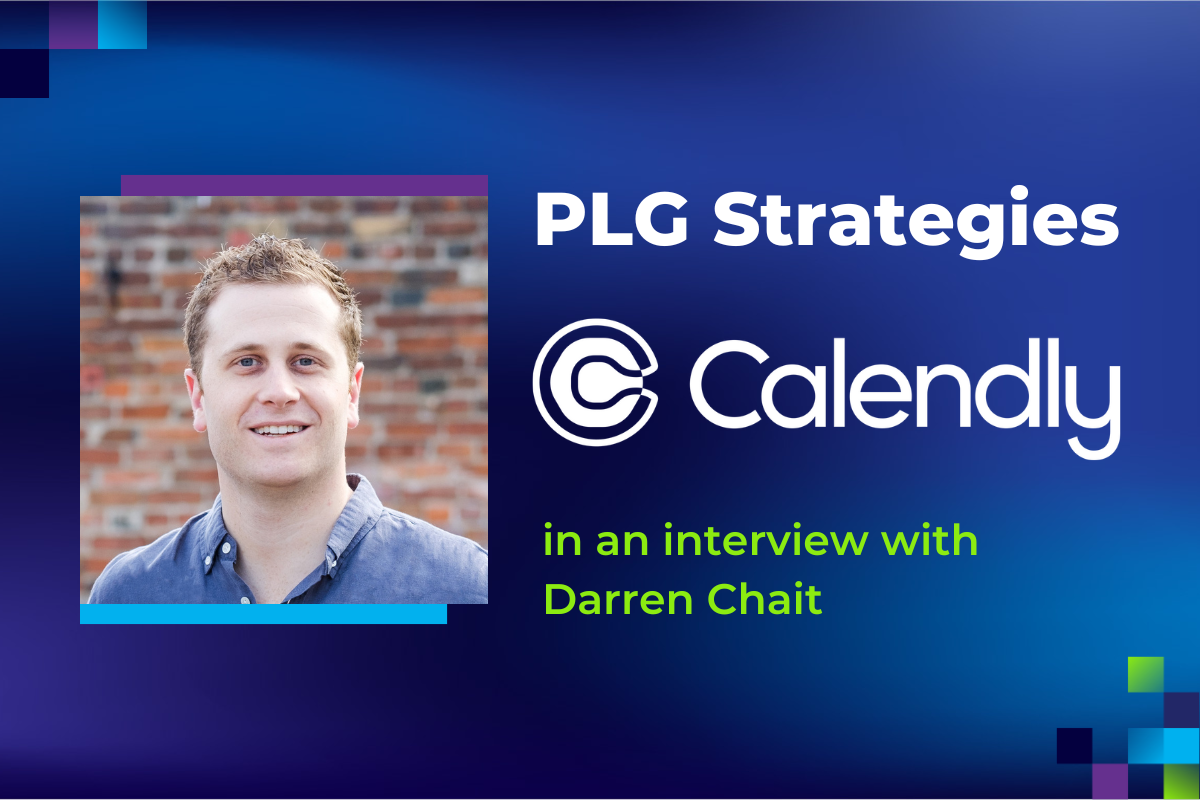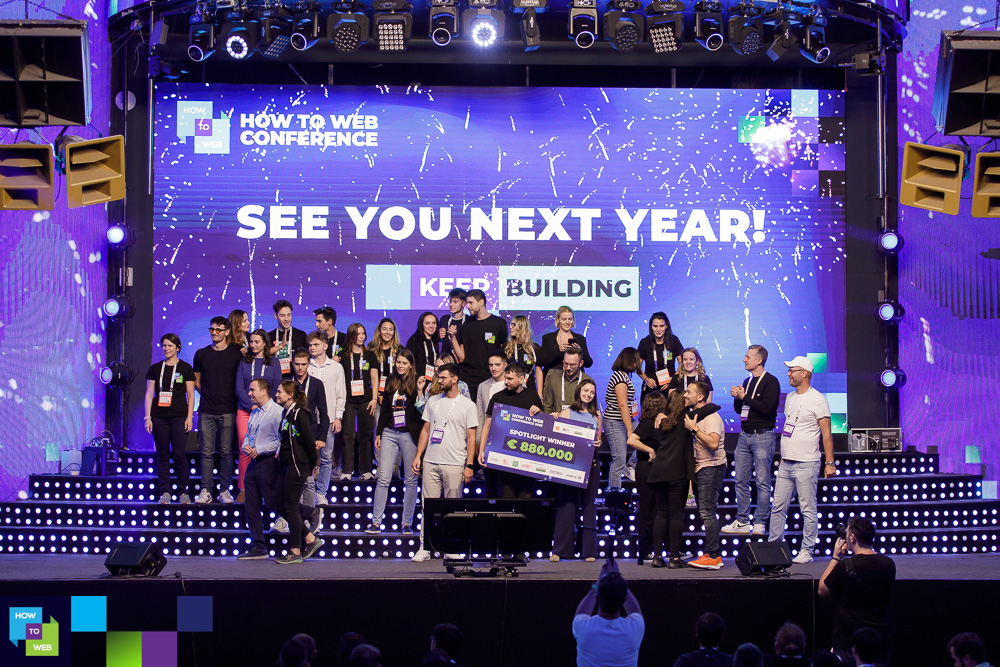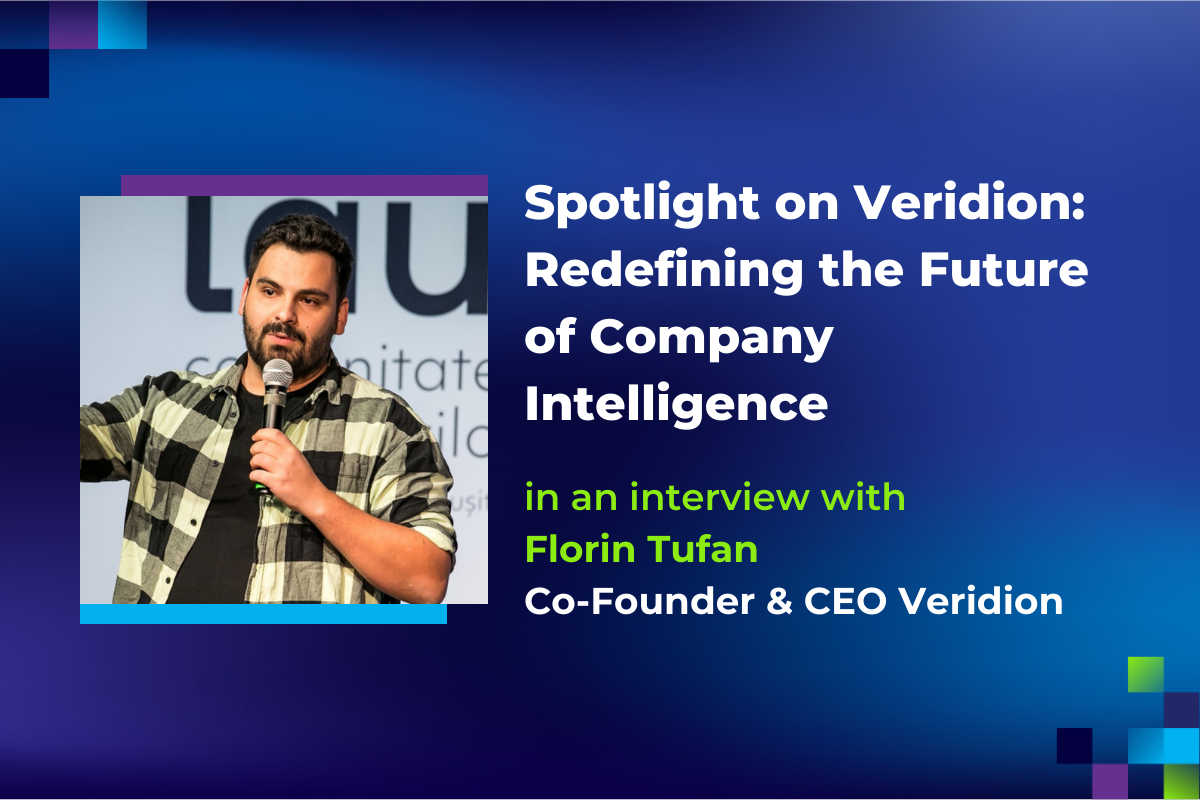28 June, 2023

Welcome to our exclusive interview with our speaker — Darren Chait, Head of Growth Marketing at Calendly, a leading scheduling automation platform. In this interview, we delve into Calendly’s product-led growth strategies, its ability to adapt to changing market conditions, the success of its recent acquisition, and the company’s future goals.
Darren shares valuable insights and advice for everybody looking to achieve product-led growth in 2023. Join us as we uncover the key principles and unique value propositions that set Calendly apart in the competitive landscape of meeting and productivity tools:
Product-led growth has become increasingly important in recent years. How has Calendly leveraged a product-led approach to drive growth in 2023? Can you share some specific strategies or initiatives that have been successful?
Over the last decade, Calendly has become well-known for its incredible PLG machine. We have a strong viral loop where our customers showcase the value of Calendly’s scheduling automation to future potential customers on our behalf – just by booking meetings. PLG, therefore, powers a key part of how we acquire our customers every day.
Even though a large proportion of our growth is driven by our PLG model, we have seen considerable success in focusing on specific personas and industries and personalizing our messaging and value proposition. This approach entails us crafting specific value stories around a set of features for a number of teams across the organization.
The tech industry has faced a challenging economic environment in recent times. How has Calendly managed to grow its pipeline despite these obstacles? Are there any unique strategies or adaptations that have been particularly effective?
With greater pressure to close deals with fewer resources or meet with top candidates before the next recruiting team swoops in, more efficient scheduling in support of achieving business objectives continues to be a very strong value proposition for Calendly.
We have multiple personas and use cases that we focus on, so we’ve been able to dial-up and down activities in each vertical based on market conditions. The same can be said with specific industries. For example, our customers span industries including tech, financial services, and education, and departments such as sales, marketing, customer success, and recruiting. This as a company strategy has enabled us to continue to grow in a volatile business environment.
At the same time, sales fundamentals matter more than ever. We appreciate the need to show a return on investment as early as possible, and in our case (with a freemium free trial business model), proving the value of Calendly even before you have to make a purchasing decision.
Calendly acquired Hugo, a meeting workflow solution, in which you were a co-founder. Can you share some insights into how the acquisition was navigated during tough times? What were some of the key challenges, and how did you overcome them?
We had an existing relationship with Tope [Awotona, Calendly’s CEO & Founder] dating back to 2018, so we knew each other and shared a passion for meeting productivity. While the economics of a deal need to make sense for everyone, it really comes down to chemistry, shared passion, and excitement about the opportunity for each respective business. As we got to know more of the team and explore how we would best integrate, we felt like a part of the team well before the deal was done. We were lucky to have great alignment here, which helps to navigate the usual challenges about how to handle customers, how best to integrate the team, a shared roadmap, etc.
Looking ahead to 2023, what are the key areas or strategies that Calendly is focusing on to drive growth? Are there any new features, market segments, or partnerships that you can share with us?
Calendly is the only scheduling automation platform built to scale across the organization while providing department-specific, best-in-class, solutions for teams. Late last year we acquired Prelude – the leading recruiting operations platform. And just last quarter we released Calendly Routing, enabling sales and marketing teams to qualify, route, and schedule meetings with high-value leads and customers instantly from their company’s website.
Our roadmap is geared towards continuing to improve the product for our core users’ workflows who use Calendly every day to make the scheduling experience less painful while ensuring that we offer the integration and security capabilities to make enterprise-wide standardization a breeze.
The COVID-19 pandemic has dramatically changed the landscape of business meetings and communication. How has Calendly adapted to these changes and capitalized on new opportunities that have emerged?
Like many, Calendly started in an office and used the pandemic as an opportunity to transform the way we work. We consider ourselves to be a ‘remote-first, but not remote-only’ company, which boils down to designing a flexible remote environment that supports the team’s productivity and wellness. It’s been fantastic to access marketing talent across the United States and see teams work where and how they work best, with a few guard rails to ensure its success.
What’s worked well for my team is recognizing the value of in-person time to build relationships, to allow more successful collaboration when we’re remote. We achieve this through in-person events from time to time. And, the adoption of asynchronous collaboration through tools like Loom and Asana has been truly game-changing for us too.
As a strategic leader on Calendly’s marketing team, what advice do you have for other software companies looking to achieve product-led growth in 2023? What are some key principles or best practices they should keep in mind?
In my experience, it’s very difficult to manufacture or ‘tack-on’ PLG – it needs to be baked into how your product works and why people use it. Users need to have a reason to share your product with other prospective users to make the flywheel work.
Once you have that working, the funnel looks very different. How do you ensure that your users can effectively sell your product to others on your behalf? Do PLG-acquired users know what they’re signing up for and why they need it? How can you leverage your existing users to tell that story – using their use of the product to inspire action?
Unlike a traditional sales model, you have a few seconds to ‘sell’ your product to your prospect without any discovery or the ability to adapt to what you’re hearing like what would happen in a normal sales cycle. That means you need to have an incredible focus on the prospect experience for your funnel to successfully convert.
And finally, PLG does not necessarily mean only self-serve. Sales organizations play critical roles in enabling certain types of customers to buy. Calendly is a good example here, where we acquire many of our leads via a PLG channel, are able to sell the product to many customers self-serve, but also have higher-touch interactions with other groups of customers to help them buy Calendly for their organization. Thinking about a unified funnel and approach to sales and marketing is the key to a successful PLG strategy – and we’ve seen this from incredible companies like Slack, Atlassian, and Figma.
With the increasing competition in the market, how does Calendly differentiate itself from other scheduling and meeting preparation tools? What unique value propositions or features does Calendly offer to its users?
Calendly started in 2013 and became synonymous with the scheduling link, but today, its value extends much deeper. Unlike other scheduling platforms, Calendly provides a solution for more robust and professional scheduling needs; offers an appealing, modern UI; features deep integrations with platforms workers love and are already embedded in like Zoom, Salesforce, HubSpot, and Greenhouse; and makes complex team scheduling easier with collaborative scheduling features. For example, collective scheduling allows users to create a link with multiple teammates’ availabilities (great for group interviews and sales demos with >1 team members), group scheduling allows more than one person to book for the same time slot on your calendar (often used for office hours, small webinars, and training), and round-robin scheduling allows you to apply logic to distribute meeting bookings among members of your team.
What really sets Calendly apart though is its ability to go deep within each function of your business and help you accomplish your goals in the most integrated, secure, and powerful way.
Lastly, as we look ahead to the future of work, what trends or innovations do you anticipate in the realm of meetings and productivity tools? How do you think these advancements will shape the way teams collaborate and achieve their goals?
The pandemic and the move to remote work have been an accelerant for the number of meetings. Particularly for external meetings (with customers, recruiting candidates etc.), it’s hard to replace the quality of collaboration that happens in real-time or the impact of speed to lead if you’re in sales. Therefore, the opportunities for optimization in my view are with meeting processes – how we schedule, prepare, and follow up on meetings. And, of course, we’re all wondering how recent developments in AI will impact the meeting space.
The average organization uses 130 different SaaS applications and with continuing decentralization of decision-making, this continues to grow each year. An inevitable side effect of this is the fragmentation of data and knowledge, and therefore the products and platforms that prioritize connectedness and integration will win. Teams will spend less time searching for and sharing information and expect that their ‘tools talk’. And, organizations will continue to be less willing to accept information scattered across their stack. This has been a key part of Calendly’s product strategy and has driven the 100+ integrations that our ecosystem supports today.
With such rapid growth in SaaS adoption, executive and IT teams are becoming more aware of the cost of choosing, procuring, and managing productivity tools across the organization. Therefore, the products that have utility for the whole organization rather than being used in isolation by a single department, will see greater adoption and overall success.
Bottom Line
As we conclude this interview, we invite you to join us at How to Web Conference 2023, where Darren Chait will be one of our rockstar speakers on stage. This is an immense opportunity to hear firsthand from a strategic leader in the industry, who has contributed to Calendly’s remarkable success through product-led growth.
The future of meetings and productivity tools is evolving rapidly. Stay ahead of the curve by joining us and exploring the latest trends and advancements that will shape the way teams collaborate and achieve their goals!
2You may also like
How to Web 2023 brought together over 2,500 international participants, 60 global speakers, and an investment prize of €880,000 for the best Eastern European startup
Welcome to our exclusive interview with our speaker — Darren Chait, Head of Growth Marketing at Calendly, a leading scheduling automation platform. In this interview, we delve into Calendly’s product-led growth strategies, its ability to adapt to changing market conditions, the success of its recent acquisition, and the company’s future goals. Darren shares valuable… Read more »
2Spotlight on Veridion: Redefining the Future of Company Intelligence
Welcome to our exclusive interview with our speaker — Darren Chait, Head of Growth Marketing at Calendly, a leading scheduling automation platform. In this interview, we delve into Calendly’s product-led growth strategies, its ability to adapt to changing market conditions, the success of its recent acquisition, and the company’s future goals. Darren shares valuable… Read more »
2


